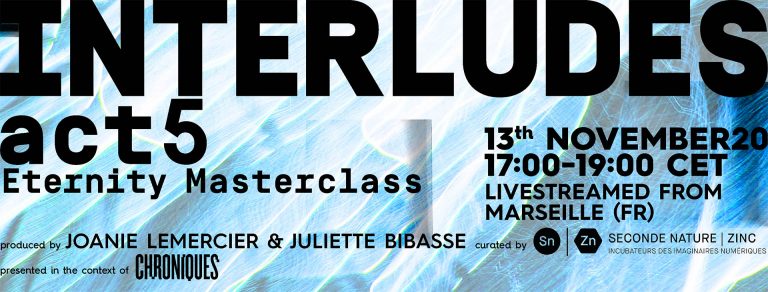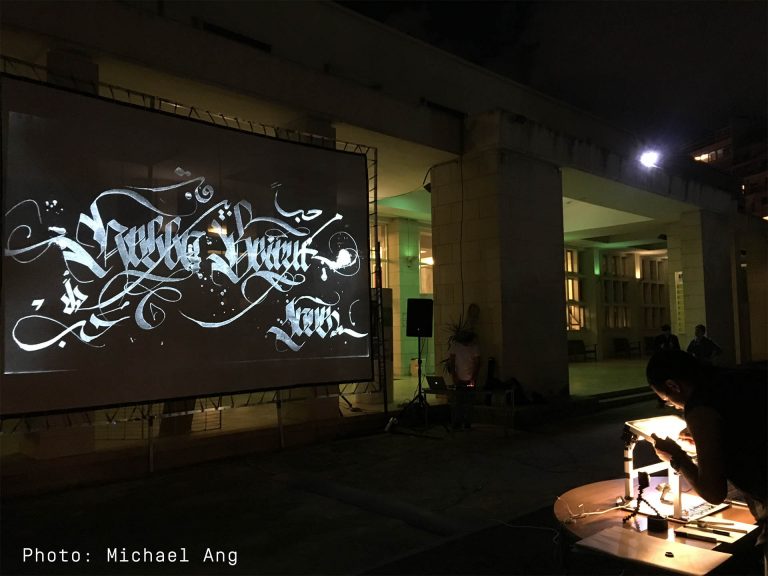
Interludes – Act 5 – Eternity Masterclass – Marseille
Anchored in the “Eternity” theme of the 2020 edition of the CHRONIQUES Biennial, this masterclass offers participants online both a technical and political approach to
In some cases, our partners have been directly asked to engage with these spaces, in some others it is more a personal interest and commitment. Those empty spaces are vacant and unused for a variety of reasons. They are, for example, derelict lands near the creative hubs which constitute some forms of “in-between zones” (Timişoara, Liepaja, Marseille, Florence). They are also large empty buildings in changing urban areas (Kuopio, Athens), some of them already part of an European Capital of Culture programme (Liepaja, Timişoara) or located in damaged sites (Zagreb, through the recent series of earthquakes). They are also hidden empty spots (Berlin). They are all good test-grounds for new kinds of culture-led regeneration. The climate emergency is forcing us to rethink our approaches and methodologies, our partners are looking for new ideas to regenerate and use empty spaces that will respect the urban ecology whilst positively transforming the areas.

There is a space and a demand to inject new project’s concepts and to learn from other experiences on how to better weave together culture, regeneration and ecology and that’s what the 13 partners from 10 countries involved in the project propose to do. They will demonstrate through long experimentations in urban settings how cultural urban regeneration is also all about ecological development, and how culture-led projects can produce ecological transformation.
Future DiverCities is about systematising ecosystemic and ecological strategies in cultural urban regeneration. As it unfolds the project will create its own new ecological assessment tools to better quantify and qualify quantity and quality the ecological impact with a framework adapted to a variety of cultural interventions.
We will pilot and design new models to qualify and quantity the ecological factor in cultural development strategies. We will review and control the range of environmental impacts arising from all project’s activities:
By the end of the project’s completion, the partner organisations will have put the ecology at the core of their organisational development and ethos. Eventually we will develop a new ecological approach with a change pf paradigm where the ecology is at the centre of cultural policy.
The project will:
• Develop innovative cultural models for ecological urban regeneration.
• Contribute to change the paradigm in cultural policy, placing the ecology at its centre.
• Build the capacity of the creative hubs leaders to become ecological changemakers.
As the New European Bauhaus* states, responding to complex challenges requires a multidisciplinary approach and a solid complementarity of interventions between sectors. Collaboration is the engine of changemaking. Although creative hubs and cultural leaders are engaged with a multiplicity of stakeholders, this remains mostly at the implementation stage of projects, when looking for partners to deliver. There is a lack of real and genuine collaboration at policy definition between organisations and sectors, with organisations working in silos and conceiving plans and programmes following a one-sided view. The conditions for creating fruitful cross sectoral collaboration at the very definition of programmes are not yet in place.
Research and innovation on ecological urban development is booming with progressive and radical new ideas in the area of urban ecology, political ecology, commoning, urban changemaking etc. Although cultural organisations have real impacts on building shared public value, they are often ill-equipped when addressing profound urban challenges. They are lacking specific know-how and knowledge to be able to integrate urban ecology and innovation principles and methodologies into their plans and programmes.
Under the main EU actions supporting Culture in Cities (EU policies for Cities and regions, European Capitals of Culture, European Creative Hubs Network-ECHN, Cultural and Creative spaces for Cities) environmental development is not yet mainstream and integrated as a priority and seen as a driver for cultural urban regeneration. European Capital of Culture and Creative Hubs leaders are primarily driven by agendas on economic growth, social cohesion and rehabilitation of buildings. Yet they are keen to explore new ideas to integrate the ecology at a more central place in their current or future plans. There is a space and a demand to inject new project’s concepts and to learn from other experiences on how to better weave culture, regeneration and ecology. And there is a need to demonstrate how cultural urban regeneration is also all about ecological development.
*The European Green Deal is a new policy voted in July 2020. Although many cities have declared a state of climate emergency, this is still very recent and has happened in the past 2-3 years. Mainstreaming sustainability and ecology in all aspects of our policies, and in cultural policies has not yet happened. The ecological definition of cultural policy doesn’t yet exist and that’s where the project can contribute to formulate ideas and to recommend innovative policy directions. Cultural policy makers at city level are looking for recommendations to integrate Green Deal strategies and plans into an already complex agenda meeting cultural, social, economic needs. But also in current cultural policy, environmental principles are often characterised by a checklist with dos and don’ts to minimise the carbon footprint of the activities and the organisations. There isn’t a very definition of what environmental cultural policy is when ecology is the key factor. Now all policy makers need to consolidate their environmental approach at all levels, and how they are going to articulate the sustainable priority with all other main priorities. There is a need and this is the time to contribute with new recommendations and new visions to defining ecological cultural policies.
*The New European Bauhaus is a creative and interdisciplinary initiative that connects the European Green Deal to our living spaces and experiences. The New European Bauhaus initiative calls on all of us to imagine and build together a sustainable and inclusive future that is beautiful for our eyes, minds, and souls. Beautiful are the places, practices, and experiences that are enriching (inspired by art and culture, responding to needs beyond functionality), sustainable (in harmony with nature, the environment, and our planet) and inclusive (encouraging a dialogue across cultures, disciplines, genders and ages).
Future DiverCities is the continuation of a first Creative Europe project (2016-2020) implemented successfully by 10 partners in Europe and Canada which has explored new ways to work in challenging urban areas through participatory methodologies and co-designed digital tools.
Future DiverCities pilot phase was an initiative of key players in the field of city making and new artistic forms to explore the power of creative innovation in challenging urban spaces. Using intercultural collaboration in a socio-cultural and digital context, the pilot phase was looking to take further the vision of art in cities and harness the spirit and thinking of the City 3.0*, a vision of cities in our digital era “harnessing the collective imagination and intelligence of citizens in making, shaping and co-creating their city” (Prf. Charles Landry, The Creative City: A Toolkit for Urban Innovators.)
It was a holistic programme looking at the ever-changing role of art and creative work in the urban context. The programme included a wide range of activities, community labs, citizens workshops and artistic interventions, to explore and show how artists and creatives can propose innovative ways to build our future cities and how this responds to the current thinking and needs around urban transformation.
The pilot phase sees creative innovation as a tool to enable citizens to see things in a different way, supporting the development of stronger communities and contributing to the concepts of happy and resilient cities.
The project has consolidated the partners’ capacity in working much more thoroughly with citizens, beyond an audience approach and involving them in participatory projects. They are equipped in implementing co-design methodologies, like the 3Hs Head-Hand-Heart. They also gained credibility to play a more active role in urban changemaking and have expanded their network beyond the cultural sector to make it happen.
*The City 3.0 is a City initiative driven by public expectations – or more clinically “user needs”. While City 1.0 and 2.0 are driven by technology and government decisions respectively, City 3.0 is neither driven by the dazzling technologies nor the government alone.

Anchored in the “Eternity” theme of the 2020 edition of the CHRONIQUES Biennial, this masterclass offers participants online both a technical and political approach to

We are coming to the end of Future DiverCities, a four-year project funded by Creative Europe, which has used participatory creative and digital work to

In a 2-hours workshop artists, students, changemakers and activists are invited to reflect about the urgencies currently happening in Hong Kong and facilitate to write